Lemon-Semolina Almond Cake
This post may contain affiliate links. Please read my disclosure policy.
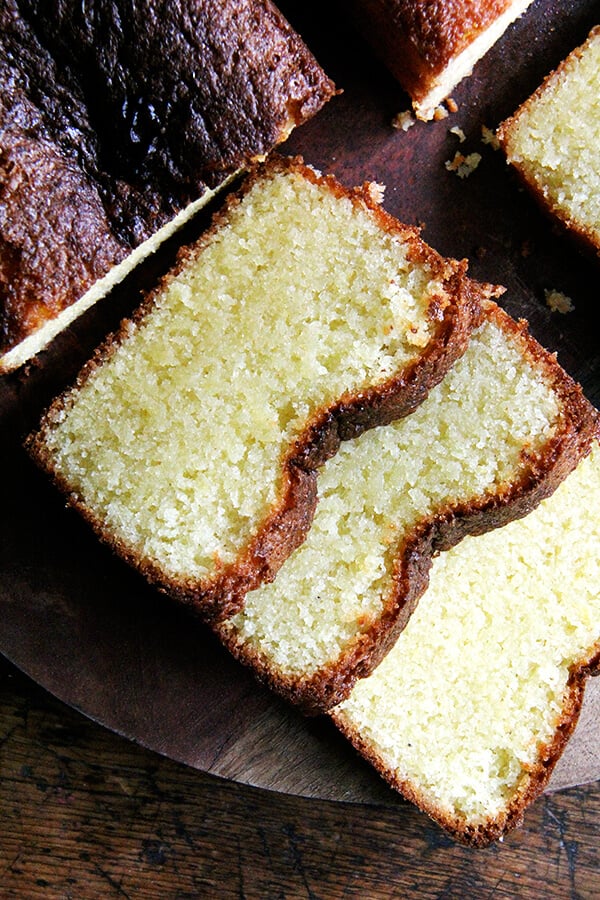
The April issue of Bon Appetit featured mini lemon-semolina syrup cakes, a recipe from Yotam Ottolenghi’s next cookbook, a dessert one, which is still in its recipe-testing phase. While I am not into mini anything right now — the less greasing/pan preparing the better — and while I don’t care for extra steps like syrup making (so lazy!), the ingredients for the cake looked so good: one half cup of semolina flour and lots of almond flour, butter, sugar, and fresh lemon juice.
I finally got around to making the cake last weekend using a loaf pan instead of a muffin tin, and, for whatever reason, replacing the butter with oil. Oh my. The cake was so incredibly moist — I know! Sorry. But there’s no other word, is there? — and delicious and perfectly sweet and lemony. For me, it doesn’t get much better than a lemon loaf cake, and this one is about as ideal as can be.
This past week I made it two more times, once with grapeseed oil and once with butter. I had no doubt I would prefer the cake made with oil — I often do — but with this one, I’m not sure. The differences are subtle. I ate and I ate and I ate hoping to discern a decisive winner until I discovered the good news: you can’t go wrong either way.
These are my observations: when the cake is made with oil, it will taste — wait for it — a little oily. When the cake is made with butter, it will taste richer and have a denser, more marzipan-like texture. Making the cake with oil allows you to whisk by hand, which is a little easier — no need to soften butter, no need to whip until light and fluffy. In a taste test with friends, more people preferred the cake made with oil, but for me, the one with butter has a slight edge.
Butter or oil? Something to ponder this weekend as you scour your cupboard for that half cup of semolina flour, because you know it’s there and what better way to use it up?
These are the dry ingredients: almond flour, semolina flour, baking powder, and salt:
This is what the batter looks like when made with butter:
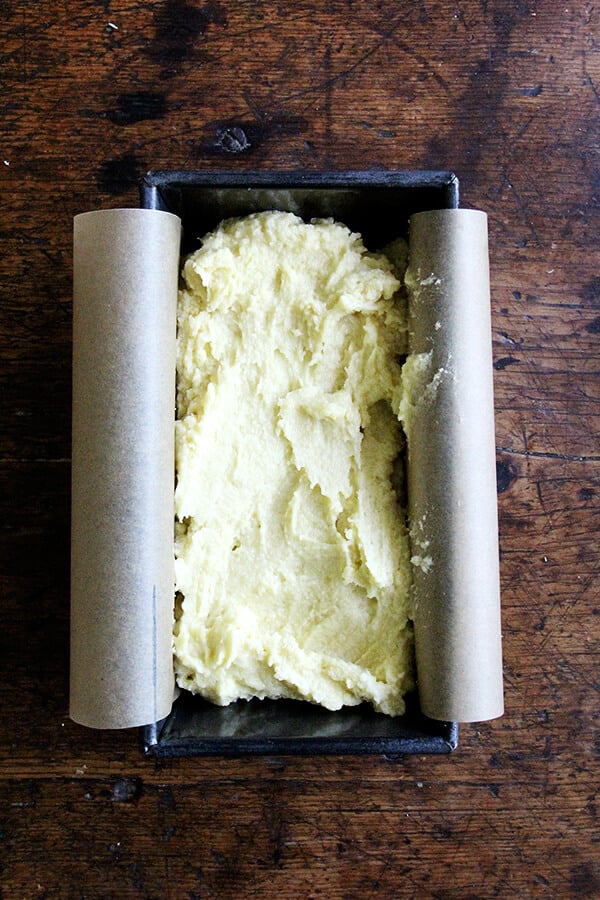
When made with oil:
The cake with the darker crust was made with oil:
This is the cake made with butter:
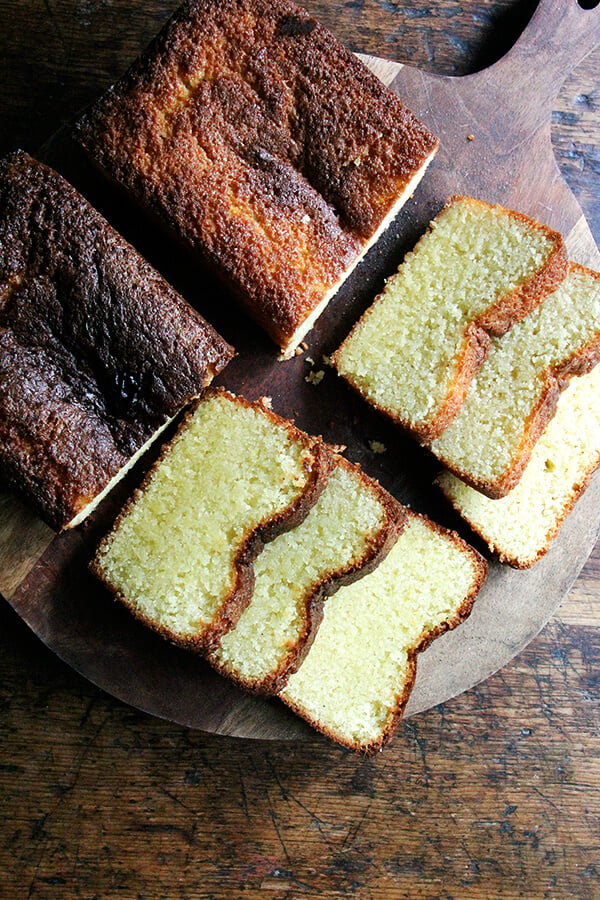
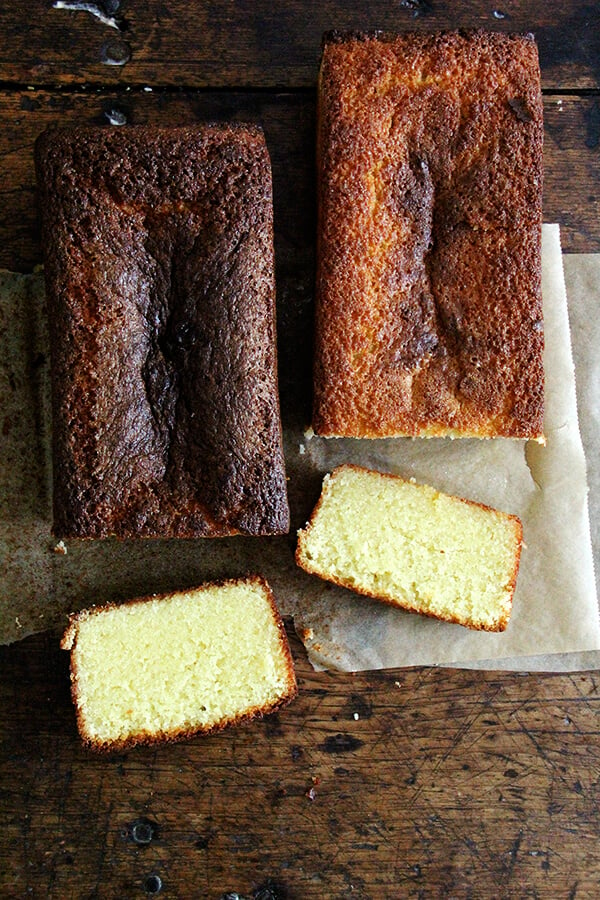
This one below is made with olive oil. Above left is made with grapeseed oil.
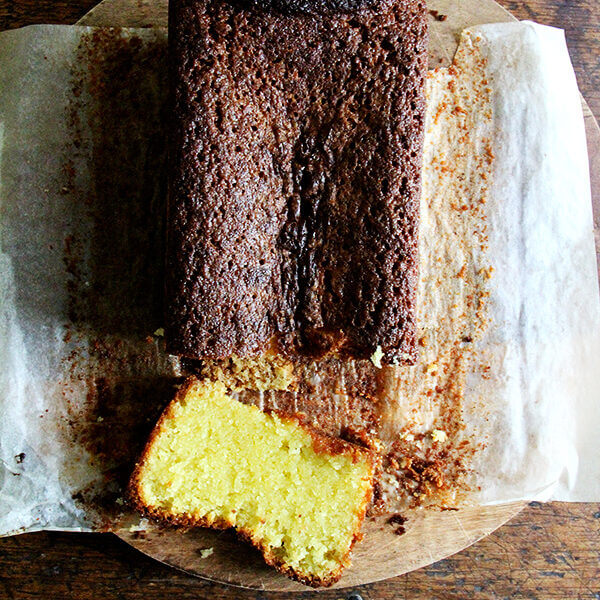
Lemon-Semolina Almond Cake
- Total Time: 1 hour 15 minutes
- Yield: 1 loaf
Description
Adapted from this Bon Appetit recipe
Check out the original recipe, which includes the addition of a syrup, but I don’t think the syrup is necessary — the cake is so delicious as is.
A few notes:
I increased the baking powder by ¼ teaspoon because I used a loaf pan. This might not be necessary if you use a muffin tin, as suggested in the original recipe. As noted in the post, I’ve made the cake three times now, once with butter, once with olive oil, and once with grapeseed oil. The difference is subtle: the oil makes the cake a little moister, the butter a little richer. Olive oil was preferable to grapeseed flavor-wise. In a tasted test with friends, the cake made with oil was preferable.
Ingredients
- 1½ cups (135 g) almond flour or almond meal
- ½ cup (79 g) semolina flour
- 1 teaspoon baking powder
- ½ teaspoon kosher salt
- ¾ cup (1½ sticks) unsalted butter, room temperature, or ¾ cup olive oil
- 1 cup plus 2 tablespoons (243 g) sugar
- 1 teaspoon finely grated lemon zest
- 3 large eggs, beaten to blend
- 2 tablespoons fresh lemon juice
Instructions
- Preheat oven to 350°F. Grease a loaf pan and line with parchment paper. Whisk together the almond flour, semolina flour, baking powder, and salt in a medium bowl to combine.
- Using an electric mixer on high speed, beat butter, sugar, and lemon zest until very light and fluffy, about 5 minutes. With motor running, gradually add eggs and beat until glossy, about 1 minute. Add dry ingredients and lemon juice and beat to combine, about 1 minute. (If you are using oil, simple whisk oil and sugar together. Add eggs one at a time, beating to incorporate, followed by dry ingredients and lemon juice.)
- Transfer batter to prepared loaf pan, and bake until golden brown, 50 to 60 minutes. Lightly press the top of the cake to test — it should feel lightly springy when done. Let cool 20 minutes or so in pan before removing and transferring to a cooling rack.
- Prep Time: 15 minutes
- Cook Time: 60 minutes
- Category: Quick Bread
- Method: Oven
- Cuisine: Middle Eastern
This post may contain affiliate links. Please read my disclosure policy.

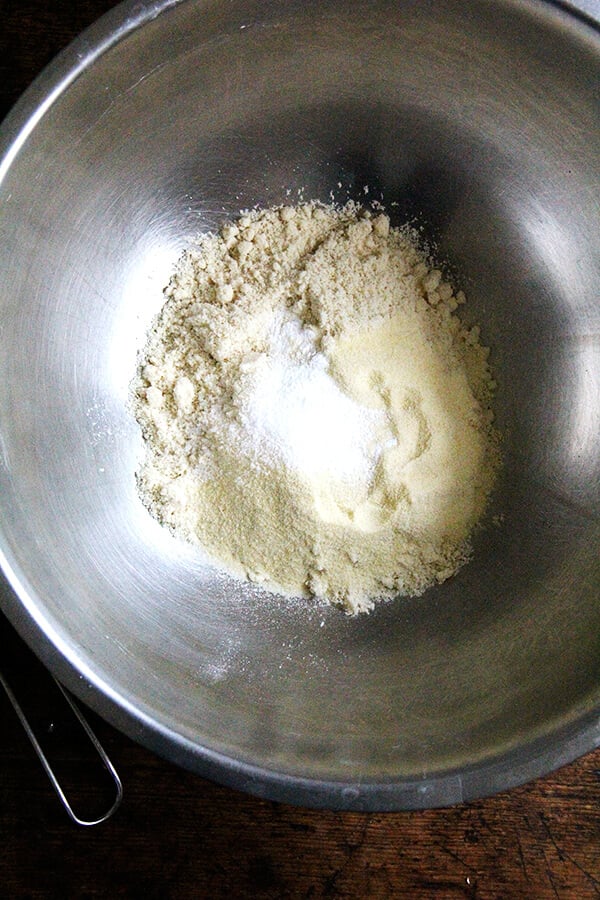
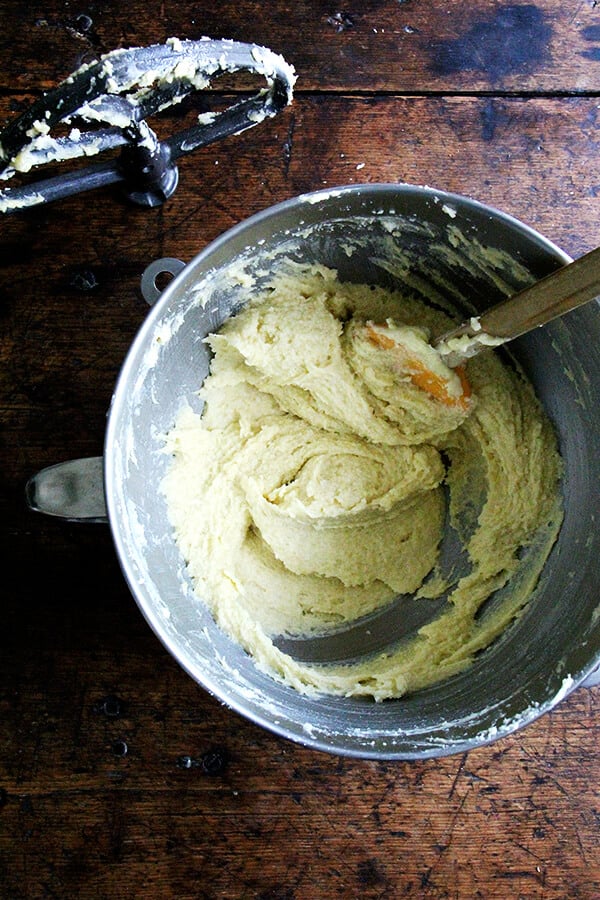
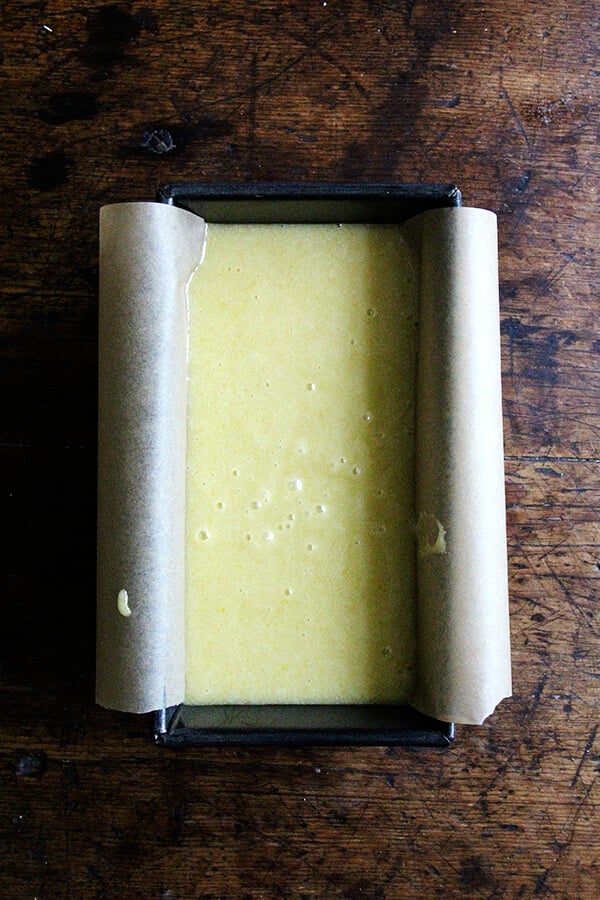
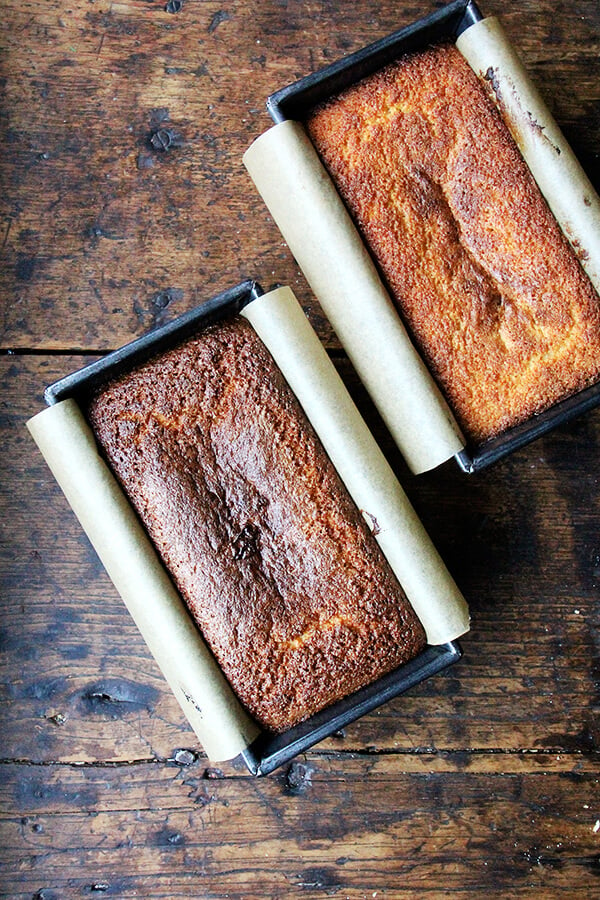
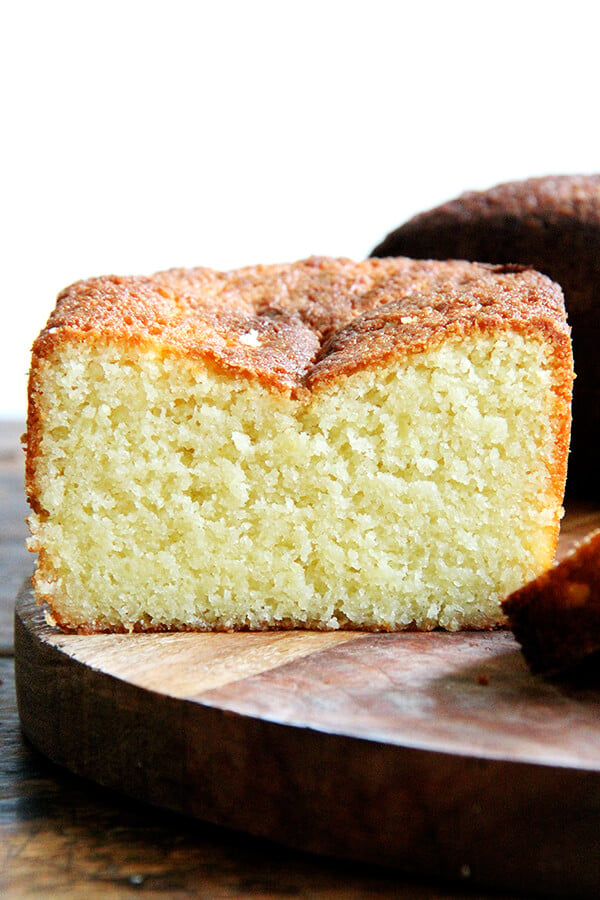
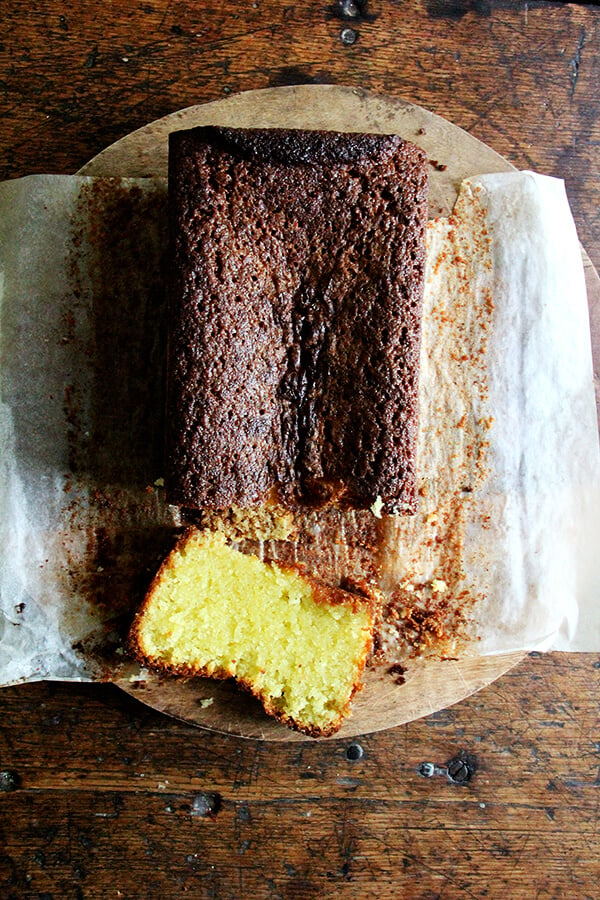
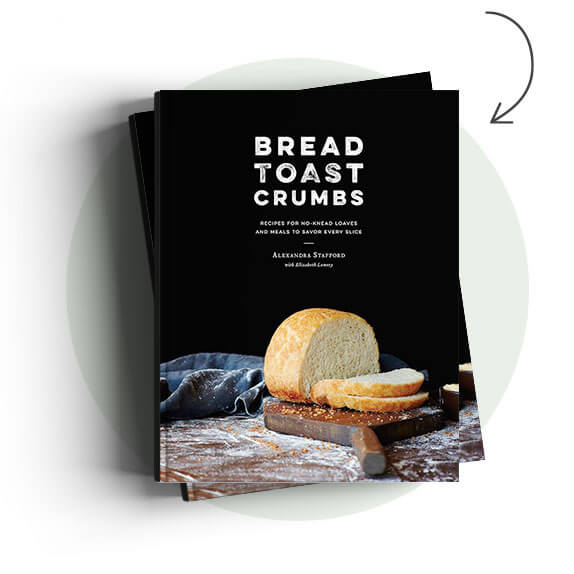

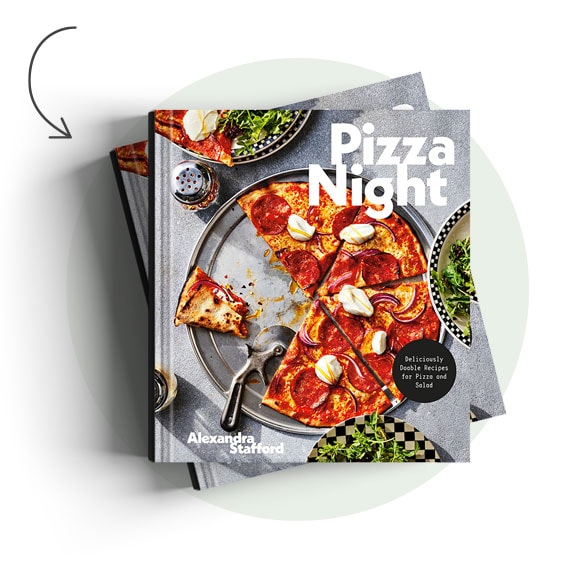


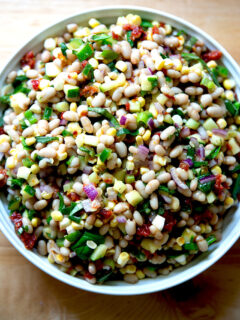
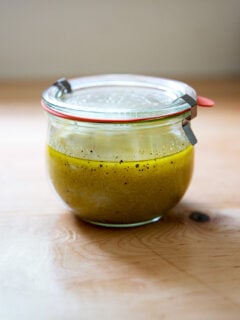



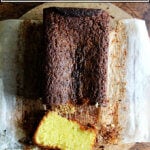
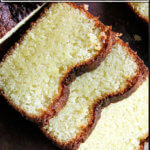
137 Comments on “Lemon-Semolina Almond Cake”
Maybe 1/2 butter + 1/2 oil = best of both worlds?
I think you are genius. Will try that next!
Best days ever? The days you post a new recipe!
LOVE Your Blog ..
You are too kind! Robin, thank you, that means so much. Have a great weekend!
I would go with olive oil which is more traditional in the Mediterranean. Also, I find cakes with oil keep better than those with butter, arguably improving in flavor over time. Your orange olive oil cake in another post is my favorite, but I’m looking forward to trying this one.
I am normally partial to cakes with oil, but I do love the flavor of butter in this one. It’s actually almost the texture of a cake made with oil but with the flavor of butter. Have you made the chez panisse almond torte? Thanks another one of my favorite recipes here, and that one is made with butter. But as I said, you can’t go wrong either way.
This looks delicious! I love lemon cake! I am making this tomorrow.
(I had to laugh at your hesitation over the word moist. My daughter and niece cringe when
I use that word).
It is the absolute worst but sometimes there is no avoiding it, right? I love lemon cake, too. Hope you like the cake, Trish, and hope you are well!!
Lemon…butter….almond flour…..does it get any better? Noooooo…..this weekend me and this lemon loaf have a date…???
It doesn’t it doesn’t!! Have a wonderful date! xoxo
Butter – Oil -Butter – Oil – shacks! difficult decision, like both; but I will try butter one today – daughters are coming tomorrow for a visit and they do l o v e their cake!!! Thank you. Carina
Yay!! So fun to have your daughters in town. Enjoy their company (and the cake! :))
Enjoyed making this amazing cake last night. Used 1 cup butter and 1/4 cup olive oil. And added 1/4 cup poppy seeds. Turned out amazing. Rich and moist. My picky 5 year old has devoured it. Thank you very much for this great recipe.
So happy to hear this, Anna! Love the idea of adding poppy seeds, and I love that you used both oil and butter … so smart 🙂
Thank you so much – I love Ottolenghi recipes and can’t wait to try this one.
Can I please ask if the measurements (particularly the tablespoons) are in US or UK measurements?
i.e. is a tablespoon 15mL or 20mL.
Thanks (from Australia)
Me, too, Jacky! They are always fun and inspiring.
The measurements are in US, so 1 tablespoon = 15 ml, 1 teaspoon = 5 ml.
Let me know if there is anything else!
You’re wonderful, thank you Alexandra.
I just made the cupcake version and have to say they are AMAZING.
If anyone out there thinks they have a fabulous lemon cake recipe and don’t see the point in trying a new one… do yourself a favour and make these. Its the lemon syrup at the end that takes these cakes to the next level.
This recipe just became one of my all time favourites.
Oh Jacky, I’m so, so happy to hear this! My aunt is now obsessed with these cakes, too, and she is a big fan of the lemon syrup, which I have yet to try, but you both are inspiring me. I think this weekend I’ll give it a go! Thanks so much for writing back.
Have you ever tried it with normal flour?
Thank you
I haven’t, but I have a feeling it will work out just fine because it’s such a small amount of semolina flour. I would stick to using the almond flour, but I think you could substitute all-purpose flour for the semolina with fine results. Good luck!
Baked this to wake my visiting college son.
He was promptly up and ate an entire small cake.
added just another 1/2tsp of fresh squeezed lemon — just because .
Delicious.
Oh Diana, this makes me so happy. So glad you and your son approve. Can’t go wrong with more lemon 🙂
Oh, I will be so popular, thanks once again to one of Ali’s incredible cakes. A small, round, birthday-candled version of your orange-ricotta loaf made its way half way across Germany the other week to surprise my aunt, and even after three days in the mail because of a holiday, it was reportedly outrageously delicious and, what’s the word… not dry at all 🙂 Can’t wait to add this one to the repertoire on Friday.
If I wanted to make it in a muffin tin for the simple reason that that allows me to eat half of it while still making a good impression when I bring it to an event, do I just change the baking time, or do I need to make other changes? I assume 15-20 minutes at the same temperature? Also thinking about substituting cornmeal for the semolina (because I am also making your magnificent rhubarb cornmeal cake), given the small amount, that shouldn’t be a problem, should it? Or do I have to try both versions?? Oh no!
Hope you guys are great!
Kathrin
Kathrin, helloooooo! That is an amazing story and of course makes me so happy 🙂 🙂 🙂 Thank you for sharing it.
So, although I have not made the muffin tin size yet, the original recipe says the cakes take 25-35 minutes to cook (large range!) at 350ºF. I think cornmeal will be fine — the cake might have a little more crunch to it, but that sounds good to me — or even just all-purpose flour. It’s only 1/2 cup, so whatever flour/grain you use will probably be fine 🙂 Now that I’m thinking about it, the only thing that is coming to mind is that cornmeal is gluten-free, so the cake you are proposing to make will be gluten free, which might make it a little bit more crumbly, which also is fine, but just wanted to bring that up.
But I think you should try BOTH versions anyway … jk 🙂 🙂 🙂 Hope you are well!! xoxo
Those cake look great!! I definitely need to make them!!
Do you think using coconut oil would be good in this recipe?? Thanks!
Hi Lee! You know, I can’t say because I haven’t tried, but I have used coconut oil in these sorts of quick breads: coffeecake with orange and chocolate . I imagine it will be delicious, and there’s no harm in trying, so I say go for it!
Okay I gilded the lily with lemon frosting and then had the end piece….unreal how good it is!!! ?????
Yay!! So happy you made this, Laurie!! I still need to try it with the lemon syrup. Sounds like gilding the lily is the way to go here 🙂
I made this cake for a brunch this weekend- it was delicious! I used olive oil and added blueberries. It was a hit, I will definitely make again!
So happy to hear this, Molly! LOVE the idea of blueberries. So nice with the lemon.
Delicious cake! I used AP flour instead of semolina and it worked fine. My almond meal seemed coarse so my cake was a bit crumbly but the it still tasted great. I agree that the syrup is not needed. My husband commented that it “tasted like a million bucks”:)
So great to know ap flour works well. If you don’t have it on hand, it’s kind of a pain to have to go search for only for 1/2 cup. Interesting about the almond meal — good to keep in mind. I’ve been using Bob’s Red Mill, which is pretty fine. So glad the husband approved!
Made this today with 1 stick of butter and 1/4 cup olive oil. I baked it in a 8×8 pan coz I wanted to take it for a large potluck. Took about 40-45 mins to bake. I did make half the recipe for lemon syrup. The cake was all gone! It was super moist and rich, but the lemon flavor was really mild. I make the barefoot contessa’s lemon cake (not the yogurt one) every year (I have a surplus of Meyer lemons) and I love the lemon flavor and fragrance of that one. She uses a ton more zest and juice in cake and syrup. I am going to have to experimenting with combining the flavor from her cake and the texture from ottolenghis – that would be the best!
Hi Julia! Thanks for writing in and sorry for the delay here — it’s been a crazy week. I’m making this again tomorrow and thinking about combining oil and butter, too. Will be curious to hear about your experiments! For the first time, I am going to make the syrup for the cake. Can’t wait!
Hi Greetings from the UK can you tell me what size loaf tin did you use please? Here in UK we have 1 lb loaf tins & 2 lb loaf tins. I don’t eat butter so it’s refreshing to find a recipe that has tried oil substitutes – thanks. Will give the recipe a try
Best Wushes Nina
Hi Nina!
I would use 1 pound loaf tin. Also, if you like olive oil cakes, this orange and olive oil cake is my favorite: https://alexandracooks.com/2008/10/29/orange-olive-oil-cake-perhaps-for-election-day/
Made this today and the cake kinda fell in the middle. What did I do wrong?
Hi Aliza,
It’s possible that it just needed to be baked longer — as you can see from my photos, it does kind of sink in the middle. Do you use a scale to measure? If not, you may just need to go a little more heavy-handed on the flours. Was it undercooked in the middle?
Is semolina hard to find? I’m not sure I’ve ever seen it in the store…
Hi Louise! It shouldn’t be too hard — Bob’s Red Mill sells a brand. Sometimes it’s labeled as “pasta flour”. Ask someone if you can’t find it. Sometimes these flours hide.
Made this yummy cake again today for friends popping over with a gang of kids. Served with jams and greek yoghurt. Scoffed down so quickly, I should have cooked two! Thank you again Alexandra.
Marco, London UK.
So happy to hear this, Marco! Jam and yoghurt sound lovely. So happy the kids approved, too.
Hi Alexandra. I am yet to make this cake and know it will be amazing. However I follow a sugar free diet and am wondering if I can substitute honey for the sugar. If so, what quantity of honey would I use? Kind regards, kikki
Hi Kikki!
I worry a little about subbing honey only because sweeteners like honey/maple syrup/ agave increase the liquid component of the dish. I think honey might be slightly sweeter as well??? I would google search “substituting honey for sugar in baking” and see what you find. Wish I could offer you more guidance!
What size of loaf pan? 9×5 or 8×4 inches? I found this recipe for basbousa when I was searching for a parve dessert for Shabbat dinner, without butter or yogurt or milk.
Hello, i made this cake yesterday and it was wonderful. What a keeper! I did notice that the top of the cake sank a little and that could be due to the high altitude baking in Colorado. Otherwise this is a gem. My work colleagues loved it too! Thanks for sharing!
Hi June,
I have zero experience baking at high altitudes, but it’s possible that had something to do with it. OR, that’s just how the cake is supposed to be? If you look at the photos in the post, my cake does in fact sink down a bit in the middle, too. One way to fix this would be to reduce the liquid a bit, though that would affect the texture/moisture of the cake. So happy you liked it despite the sinkage 🙂 Thanks for writing!
I love Ottolenghi’s almond clementine cake, so am looking forward to trying this. Any recommendations on veganizing it? I can sub vegan butter or olive oil for the butter. Would you recommend “flax eggs” for the eggs? Thanks!
hi, I’m thinking to make this tomorrow. can I use 1cup of almond meal and 1cup of semolina? is this similar to raven cake?
thank you
Hi Saraiya, I don’t know what raven cake is? But yes, I think 1 cup each of almond meal and semolina will work out just fine.
I came across your recipe looking for a way to use up my semolina and coconut flour. I sounds wonderful and I will make it according to your recipe but may go half and half on the butter/oil. I am wondering if you have tried any sugar substitutes with this recipe, such as Splenda or Truvia or Xylitol? I am making this for a staff meeting but I know my husband will come into the kitchen and ask if it is sugar-free. I may try it too since I seem to have an abundance of flours! If so, I will let you know. Please post if you try it.
Susan
Loaf pan size, please. Kind of an important piece of information.
My loaf pans are 8.5×4.5-inches, but you could use anything similar — 9×5 inches, 10×5 inches, etc. The baking time will differ depending on how big your pan is, so after 50 minutes of baking, you’ll just have to test for doneness periodically.
I’m looking forward to serving this for Easter tomorrow! I made the butter version and used a 8″ dia. x 3″ round cake pan – was done at 50 minutes. Will serve surrounded by a mix of berries.
So great to hear this! Thanks for the update on the timing. So helpful for others to know. Hope it turned out well. Berries sound lovely. Happy belated Easter!
Moist is a most wonderful of wonderful words! It describes that thing we all love….CAKE! Coffee cakes and butter cakes and pound cakes and cupcakes…what makes you want to eat them? If they’re MOIST! Yum! Let’s embrace this lovely cake-describing word. I, for one, love it ????